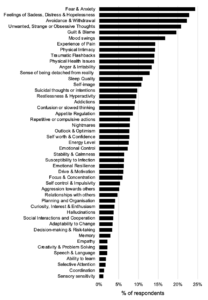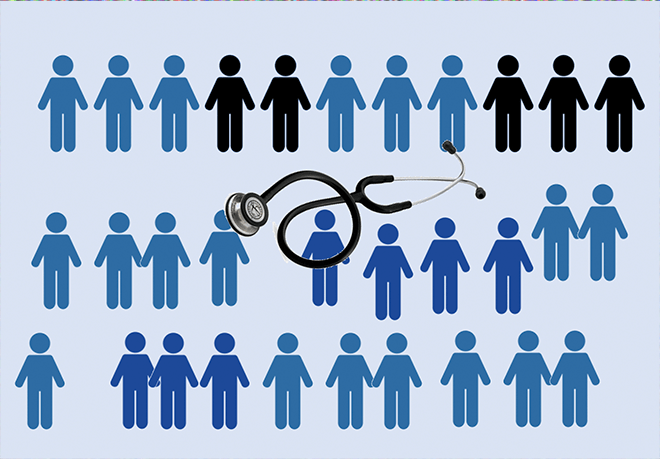The level of mental health distress in the global population is a continuum both in number of symptoms and severity of symptom prevalence. How do you draw the line between normal and clinical disorder?
How many people actually have a mental health disorder? Mental health epidemiology is notoriously variable. For example, a recent meta-analysis by Wu et al of 48 studies across seven populations on the point prevalence of depression during the pandemic in 2020 found estimates that ranged from 3.1% to 87.3%. Similarly a meta-analysis of point estimates of the prevalence of autism showed a wide range from 4 to 146 per 10,000 (0.04% to 1.46%). These differences can arise from a variety of factors – the assessment tool used, geography and external factors such as the pandemic. Underlying this enormous variability of estimates however is the fundamental challenge of defining disorders.
How do you define when something becomes a clinical ‘symptom’?
The first aspect of this challenge is how you define when a problem becomes a clinical level symptom – is it based on the severity of the emotional or behavioral experience? The frequency at which it occurs? Or some collective impact on your ability to function in society? The problem is every assessment tool makes its own judgement in whether it asks about frequency or severity. Furthermore, many put the judgement in the hands of the patient or study subject asking them to answer ‘Yes’ or ‘No’ to questions like ‘Do you often experience XYZ’ or asking them to recall how many times they did something in the last month when most people cannot accurately recall how many times they drank water the same morning.
The continuum of symptom prevalence
The Mental Health Million project which uses the MHQ assessment tool asks about all symptoms across ten major mental health disorders on a life impact scale – essentially bypassing the challenges of poor recall of frequency by asking individuals to rate how much a particular mental aspect impacts their ability to function on a 9-point scale. Across the 47 elements (and therefore potential symptoms on the MHQ) at what rating does one draw the line to consider it a symptom? In a sample of over 100,000 people from the Mental Health Million project obtained in 2021, if we use only the highest rating of dysfunction, symptom prevalence across the population decreases exponentially such that 40% have no symptoms, 12% have 1 symptom and 12.3% have 5 or more symptoms (solid line in Figure 1 below). The DSM criteria for various disorder diagnoses ranges from 3 to 7 symptoms, so one could assume that those with more than 5 symptoms might be considered to have some clinical disorder or another. However, that is an arbitrary judgement as it is really a continuum with no clear separation between clinically disordered and healthy.
Figure 1
When changing the threshold of severity by which to define a symptom by one point on the scale, ‘prevalence’ changes quite a bit. Now only 24% have no symptoms and 25.8% have 5 or more symptoms (dotted line in Figure 1 above). So how many people do actually have a mental health disorder? At least 12.3% may be a good answer, but the upper bound depends on our subjective judgement. If we assume an even lower threshold where any level of impact of mental factors on ability to function is considered, then virtually all of humanity would be ‘disordered’. Where would that leave us?
Symptom prevalence in 2021
So what have we been primarily afflicted with at the symptom level in 2021? Considering the most stringent threshold of severity to define a ‘symptom’, almost 25% of people have experienced debilitating Fear and anxiety and ~23% debilitating Feelings of sadness, distress and hopelessness as well as Avoidance and withdrawal. In a close fourth place at 21% are Unwanted strange or obsessive thoughts.

Not surprising certainly – it’s been a tough year coming through the pandemic.


















